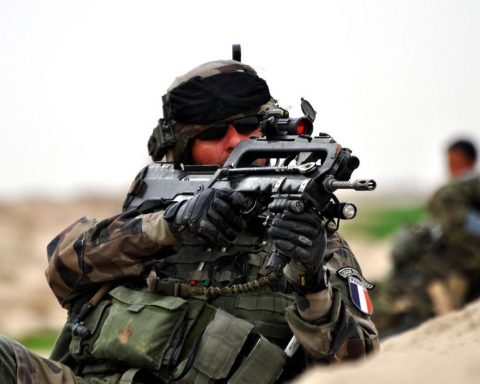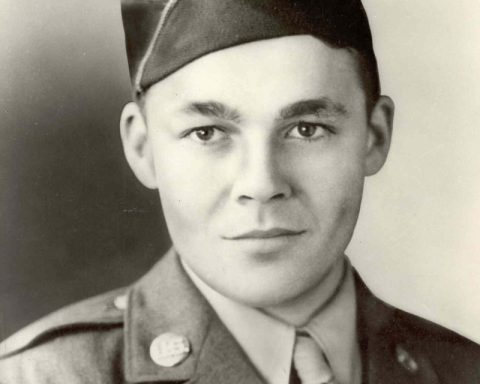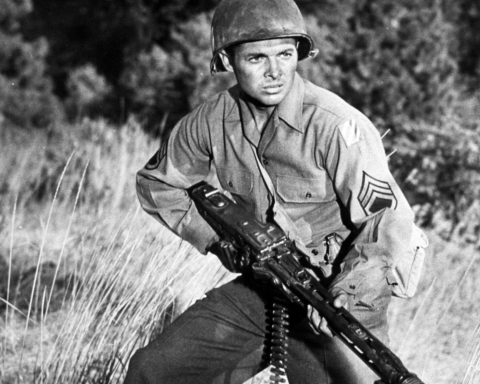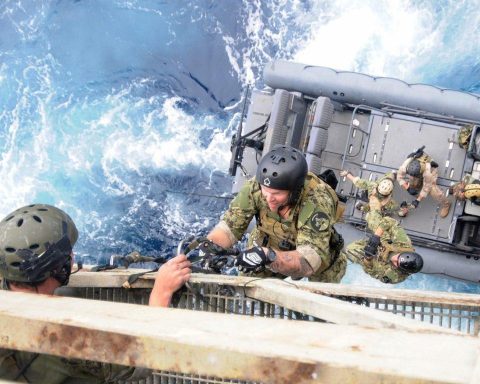The French Foreign Legion is a unit of the French Army open to people aged 18 to 40 of any nationality. Potential recruits are required to serve for at least five years and are admitted regardless of their past and without personal documents. This has contributed to the public perception of the Legion as a place for adventurers, desperadoes, and criminals from around the world. However, the Foreign Legion is now a highly organized unit of well-trained professional soldiers, with approximately 8,500 members from 50 different countries.
Organization
The units currently comprising the Legion include five infantry regiments (1° RE, 2° REI, 3° REI, 4° RE, and 13° DBLE), one motorized infantry regiment (1° REC), two engineering regiments (5° RMP and 6° REG), and a parachute regiment (2° REP). All of them are grouped under an administrative command called the Groupement de la Légion Étrangère (GLE). The 2nd Parachute Regiment, founded in 1956, is particularly symbolic of the Foreign Legion and carries on the traditions of the 2nd Parachute Battalion, which was destroyed in the battle of Dien-Bien-Phu.
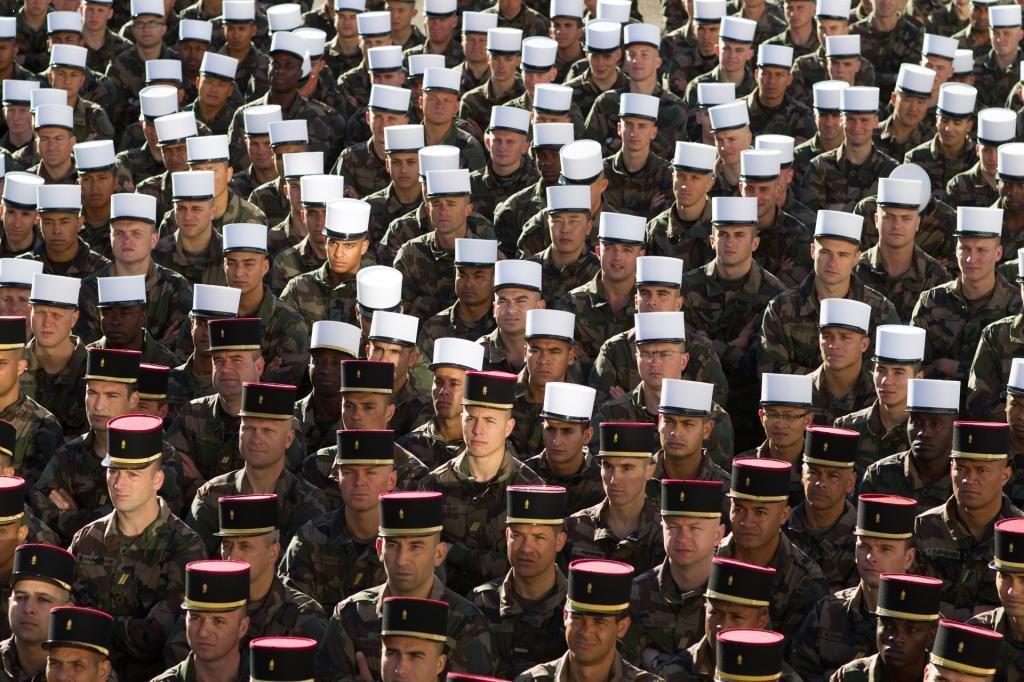
Selection
Joining the French Foreign Legion is a long and challenging process. Candidates can begin their journey at one of the many recruitment offices located throughout France, or at a “Veterans Association” located around the world. Once registered, candidates are required to report to Aubagne, where they are stripped of their civilian clothes and personal documents and given work uniforms. This is done to suppress any thoughts of escape and to eliminate differences between candidates, in order to promote the “brotherhood of the Legion” and ensure that members are bound by this philosophy, rather than by their nationality or skin color.
After receiving their uniforms, candidates undergo three weeks of training and a complete medical examination. The Legion also examines candidates’ motives for joining, as well as their political beliefs and past history, in order to ensure that they are not seeking refuge as criminals on the run. Once they successfully complete this initial training, candidates must then sign a contract to serve for at least five years. Only those who are able to meet the rigorous physical and mental demands of the French Foreign Legion will be accepted into its ranks.
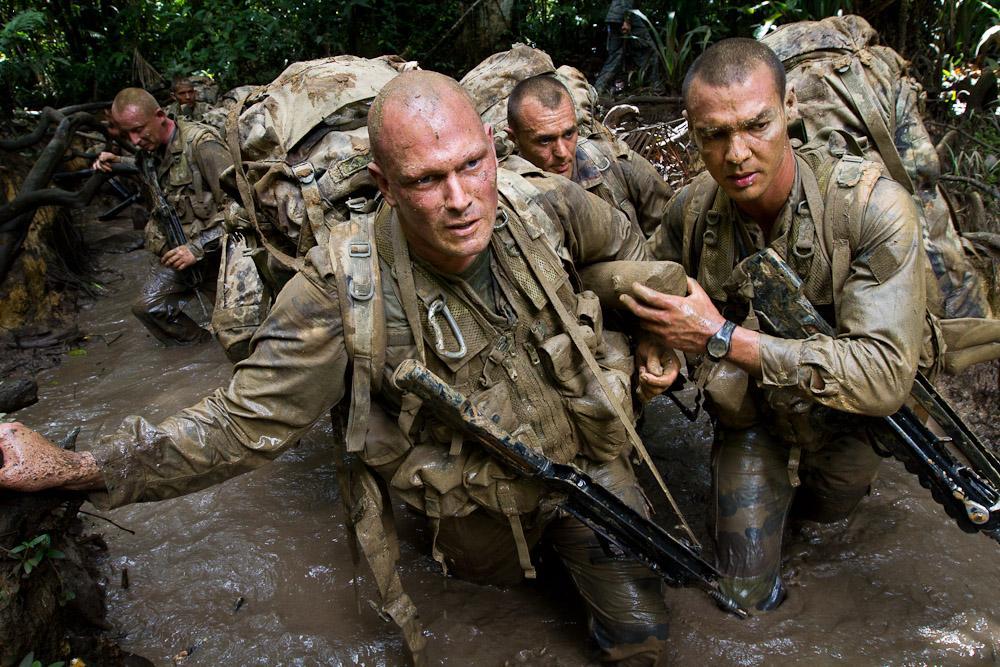
The selection process for the French Foreign Legion is a rigorous one, with candidates going through a series of physical and psychological tests, as well as a medical examination. Those who successfully complete the three-week training period in Aubagne will sign a contract for a minimum of five years, during which they will receive a monthly salary of 1,200 euros and will be required to serve in non-European units for at least two years. The contract also provides the option to seek French citizenship and the possibility of re-enlistment in the Legion upon completion of the initial contract. While joining the Legion means giving up certain civilian privileges, such as possession of a driver’s license or the ability to marry, it also provides its members with a new identity and protection.
The Legion also has a rule that legionnaires cannot be publicly photographed without their explicit consent. After signing their contract, recruits are sent for further training at the Qartier Lapasset base in Castelnaudary, home to the 4° RE regiment.
Training
The French Foreign Legion’s basic training is designed to prepare candidates for the rigors of military life and to test their physical and mental endurance. Upon arriving at the Qartier Lapasset base in Castelnaudary, home to the 4th Regiment (4° RE), new recruits undergo an initial four-month training program, followed by another four months of advanced basic training. These periods are primarily focused on improving physical strength and mental readiness to the highest level possible. The training includes physical and mental tests and exercises, as well as instruction in the handling of firearms and combat shooting, infantry combat techniques and tactics, terrain-clearing operations, and combat methods in urban areas. The Legion also incorporates its own unique experiences, such as “lessons learned” from operations in Indochina, Africa, and the Sahara desert, into the training.
Discipline is strictly enforced in the barracks and camps, and although physical punishments are no longer used, other forms of punishment, such as strict rules for maintaining a perfectly clean and presentable uniform, are enforced. Candidates are also required to complete 192 hours of guard duty per month and start each day with 100 push-ups. In addition to these physical demands, candidates must also complete long marches in full combat gear, starting with a 7 km walk and gradually increasing to 21 km. Overall, the French Foreign Legion’s basic training is meant to prepare candidates for the challenges of military service and to instill the spirit and traditions of the Legion in them.
The end of the initial training phase for candidates in the French Foreign Legion is marked by a grueling 25 km night march through difficult terrain, which must be completed within three hours while carrying a backpack and equipment weighing a total of 50 kg. Those who successfully complete this phase are given the informal title of “advanced volunteer” and are granted the privilege of being allowed to leave the barracks. They are also presented with red shoulder epaulettes with fringes and a blue wrap to wear under their belt as part of their exit uniform. Prior to this ceremony, candidates went through training without wearing a hat, but at the ceremony, which is held under torches and accompanied by the song “Le Boudin,” they are given a white cap for the first time, symbolically becoming “Hommes du Rang,” or “legionaries of the second class” with all the rights and obligations that come with that title.
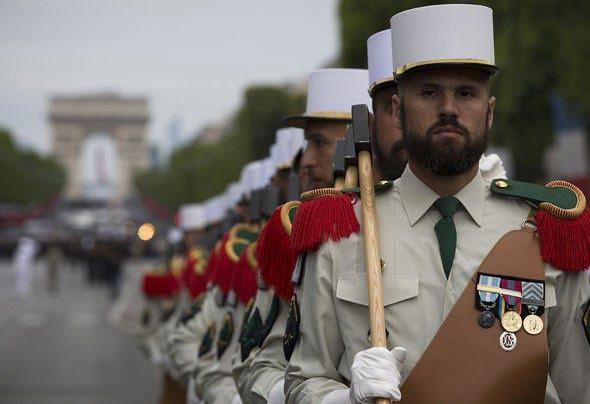
After completing four months of training at the Legion barracks in Aubagne, candidates move on to the second part of their training, which also lasts for four months and takes place at one of the Legion’s barracks in Nîmes (2° REI), Orange (1° REC), or Avignon (6° REG). Here, future legionnaires learn how to work together as a unit and become familiar with the basic tasks and peculiarities of different regiments. All members of the Legion, including those who will be performing non-combat roles, must go through both of these basic training phases. This is because every legionnaire must be able to form and command a combat group, and any legionnaire may also be called upon to serve as a support member of the 2° REP and be sent into action.
After completing the advanced course, individuals who have enlisted in the French Foreign Legion’s Second Parachute Regiment (2° REP) move on to the highest level of training, which takes place at the regiment’s base in Calvio, Corsica. This intensive parachute training program lasts for four weeks and consists of several stages.
During the first week, candidates participate in long day and night marches in full gear to increase their physical fitness. The second week is dedicated to learning jumping and landing techniques and safety, and candidates practice these skills by jumping from a parachute tower. In the final two weeks, candidates make a total of six jumps, one of which is at night. It’s worth noting that the French army requires all legionnaires to complete this many jumps in order to be eligible for a parachute license.
2° REP
The 2° REP (Second Parachute Regiment) of the Foreign Legion is a highly specialized unit that is capable of acting as conventional infantry, “air cavalry,” and airborne troops. Its members are also trained to transform into paratrooper-commandos, a capability that sets them apart from other paratrooper units. This transformation began in 1963 under the leadership of Lieutenant Colonel Caillaud, a legendary Legion soldier and the first commander of the Second Legion Parachute Battalion (2° BEP), which later became a regiment.
The 2° REP is divided into six companies: the Command and Service Company (CCS), the Support and Reconnaissance Company (CEA), the 1st Company for urban operations, night operations, and anti-tank operations, the 2nd Company for mountain operations, the 3rd Company for amphibious operations, and the 4th Company for sniper operations, demolition, and sabotage.
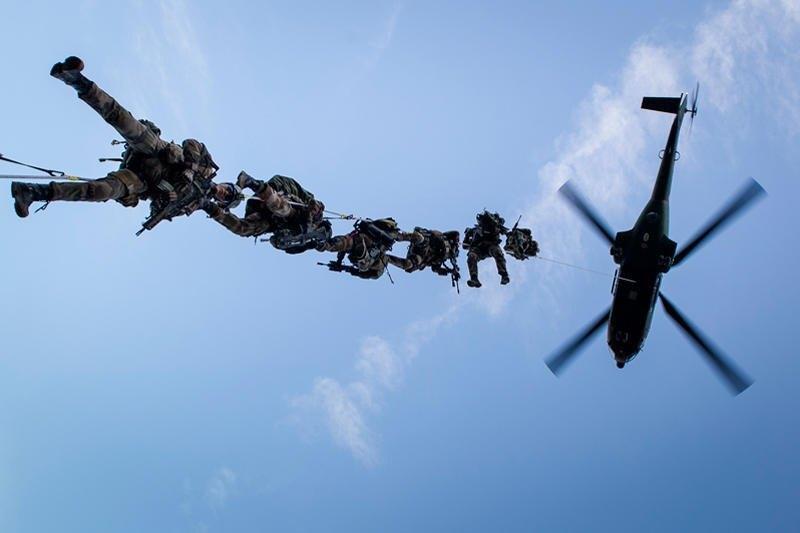
The 2° REP has a total of 1,275 members, who are trained in different skills and specialties depending on the company they are assigned to. However, all members eventually go through jungle combat training (held in Guyana) and desert combat training (held in Djibouti). Within the 2° REP, there is a small unit within the CEA company known as the CRAP (Commandos de Renseignements et dans la profondeur), which was formerly called the SOGH (Sauterus Opérationnels de Grande Hauteur). This group is made up of elite parachutists who are experts in high-altitude jumps and free fall, with late parachute openings. They are trained for reconnaissance and sabotage missions deep behind enemy lines.
CRAP
The Commandos de renseignements et dans la profondeur (CRAP), or reconnaissance and deep penetration commandos, are the “eyes” of the French Foreign Legion’s 11th Parachute Division. They specialize in infiltrating enemy territory by jumping from high altitudes and opening their parachutes at low altitudes after a controlled free fall, a risky maneuver that requires a high level of professionalism. In addition to carrying out reconnaissance missions, CRAP teams may also be called upon to perform sabotage and anti-terrorist actions at distances of up to 4,000-5,000 km from their home bases.
Each regiment within the 11th Parachute Division and the 13th RDP (including the 7th and 14th RPCS) has a CRAP team integrated into its Command and Service Company (CCS) or Support and Reconnaissance Company (CEA). There are two CRAP teams in each regiment, but the 2° REP has as many as 34 CRAP teams due to its unique role. In the past, training in CRAP jump techniques was only available to regular paratroopers who had served in airborne units, but today it is open to volunteers who have spent a certain number of years in these types of units and meet very rigorous medical and professional requirements. To be eligible for the CRAP course, candidates must be at least rank captain and have completed the second level of commando training or have demonstrated their qualifications as group or platoon commanders, verified by the CNEC centers in Montlouis and Colliure. The Airborne Forces School ETAP in Pau organizes two CRAP courses each year, each lasting 12 weeks and enrolling 25 participants. During the course, participants make a minimum of 80 jumps, at least 9 of which are night jumps. They also become familiar with the various types of equipment and materials used for high-altitude jumps and practice the positions they will take during controlled free falls on the ground.
Candidates for the CRAP course at the Airborne Forces School ETAP in Pau begin practicing free jumps on the third day of training, starting with jumps from a height of 1,500 meters and gradually increasing to 2,500 meters. After two weeks, they are ready to make jumps with all of the equipment and weapons they would normally carry on a mission. At the end of the third week, they start practicing night jumps. In the past, CRAP jumps were only practiced from a maximum height of 4,000 meters, but today they are performed from 6,000 meters and will soon be conducted from 9,000 meters, according to the school. These higher jumps require the use of masks, oxygen bottles, and specially designed parachutes that allow paratroopers to fly over long distances (30-40 km) in maximum secrecy. The jumps at the ETAP school are conducted from Transall aircraft.
Members of CRAP teams must be proficient in using the KAP 3, a device that automatically opens the parachute at a predetermined height in the event that it fails to open manually for any reason. Every year, all CRAP team members go through a one-week refresher course that includes a total of seven day jumps and one night jump to renew and confirm their licenses. Upon completing the 12-week course in Pau, new free jump specialists return to their regiments and continue training for their specific tasks. CRAP teams have been involved in all of France’s military actions around the world, particularly in Africa (Chad, Rwanda, the Central African Republic, and Somalia) and in the Gulf War as part of the French Daguet Division. They have also been used by the OUN peacekeeping forces for reconnaissance missions in war-torn areas of the former Yugoslavia.
History
The French Foreign Legion is a unit with a long and tumultuous history, steeped in myth. To understand its present, it is necessary to look back at its past, which dates back 175 years to its baptism of fire in Algeria. Composed entirely of volunteers from all over Europe, the Foreign Legion was created by decree on March 9, 1831, during the reign of King Louis Philippe. At the time, it was made up of seven infantry battalions, each comprising soldiers of the same nationality: the 1st, 2nd, and 3rd battalions were composed of Swiss and Prussians, the 4th of Spaniards, the 5th of Italians, the 6th of Belgians and Dutch, and the 7th of Poles. The legionnaires were only allowed to fight outside of European territories, so they were sent on their first military mission to Algeria, under the command of Swiss Colonel Stoffel, to fight against the Algerian Berber tribes.
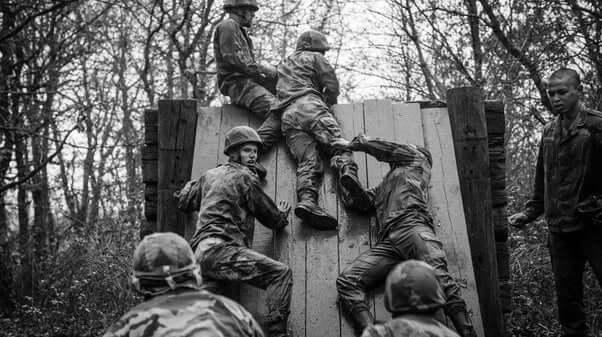
According to accounts, the poor military spirit and linguistic confusion of the early legionnaires caused some problems that were addressed by the introduction of an almost inhumane level of discipline. The Legion’s motto is “honor and loyalty,” and it has remained true to this motto throughout its history, carrying out missions around the world, including in the Balkans and the Middle East.
In April 1832, the Foreign Legion saw its first combat in the village of Maison Carree near Algiers, and it was immediately plunged into bloody warfare. Despite being created to fight for freedom, the Legion was sent to participate in a war of conquest and was involved in brutal fighting. The battle at Maison Carree ended with the French king presenting the first war flag to the new commander of the Legion, Colonel Combe. At this time, Arab resistance intensified, and under the leadership of Abd-el-Kader, Emir of Mascara, new battles were fought, such as the one in front of the port of Oran. The Emir was defeated by the Spanish soldiers of the 4th Battalion of the Legion and was forced to retreat and become a guerrilla. The conflicts and fighting continued, with battles such as those for the conquest of Arzew, Kole, and Mostaganem.
Three years later, in 1835, while the uprising in Algeria was still ongoing, the Legion was invited to Spain to participate in the first Carlist war on the side of Queen Isabella. The war lasted until the end of 1838.
Spain and Algeria
The war in Spain was a long and brutal one, with few prisoners taken. The legionnaires responded to the cruelty of the Basque insurgents with equal ferocity. During this time, Colonel Bernello, who commanded the Legion in Spain, attempted to create an effective tactical battle group by equipping his units with artillery, engineering, and cavalry. However, the ranks of the legionnaires thinned as they fought battle after battle. In the battle near Zubira, the 3rd and 4th battalions of the Legion were almost completely destroyed, and in June 1837, Colonel Conrad, Bernello’s successor, was killed in battle near Barbastra.
The military campaign in Spain ended in 1838, but the Legion was almost completely decimated, with less than 500 of the 5,000 men who had landed near Tarragona in 1835 surviving. At the same time, other units of the Legion were still engaged in the fight against Emir Abd-el-Kader in Algeria and participated in the siege and conquest of the city of Costantino.
According to official rhetoric, in addition to being warriors, Legionnaires were also constructors, similar to the Legionnaires of Imperial Rome. During this time, the Legionnaires often put down their rifles and picked up shovels and hoes to build roads, bridges, canals, embankments, and most notably, their own barracks called the Vienot barracks in Sidi-bel-Abbess. In 1841, the number of Legion battalions had grown enough to form two complete regiments: the first located in Sidi-bel-Abbes and the second based in Bone, on the border of the Sahara Desert. The pacification of Algeria progressed quickly during this time, except for a few areas such as Kabylia where Algerian guerrillas were active. Other areas were conquered, and on June 24, 1857, the Legion fought its first famous battle at Ischeridan under the command of General MacMahon (who later became the President of France). His 2nd regiment marched towards a ridge where approximately 500 Arab guerrillas were waiting and, when they were close enough, MacMahon ordered a charge with bayonets drawn. The victory at Ischeridan ended the anti-French guerrilla resistance in Algeria and marked the complete pacification of the country. The Legion demonstrated its value as an assault unit that France would use in the future wherever it needed to fight for its interests with weapons and force. The Legion went on to participate in new campaigns in Crimea, Mexico, and Italy, further building its reputation as a formidable and bloody force.
Epics in Mexico and Africa
The 1st Regiment of the French Foreign Legion, under the command of Colonel Vienot, played a key role in the Crimea as part of the French expeditionary corps. The regiment, along with units from the 2nd Regiment, famously fought at Abno and ultimately contributed to the successful siege and capture of Sevastopol. Following this campaign, the Legion was reorganized and the veterans of Algeria and Sevastopol were united in the 2nd Regiment, while Swiss volunteers were assigned to a new regiment that was officially named the 1st Regiment of the Foreign Legion.
In 1859, the Legion was sent to Italy to join French and Sardinian-Piedmontese forces in the Second Italian War of Independence. The Legion played a crucial role in the battle of Magenta, where they successfully defended the left wing of the French-Sardinian-Piedmontese formation against the Austro-Hungarian army. Under the command of Colonel Chabriere, the Legion launched a fierce bayonet charge that cleared the way for the French expeditionary corps to enter Milan. The Legion also saw fierce fighting at Solferino and St. Martin before the end of the war.
After its triumphant victory parade in Paris, the French Foreign Legion returned to Algeria, where it was reorganized once again. Only one regiment remained after this process. Three years later, Napoleon III, the King of France, decided to establish his rule in Mexico and sent a strong military contingent, with the core being the Legion, to support this effort. Despite facing a hostile environment and the outbreak of a popular revolution led by Benito Juarez, the Legion made a name for itself through its courage and sacrifice in numerous battles. One such famous event took place when Captain Danjon, two second lieutenants, and 62 legionnaires from the 3rd company found themselves in a Mexican ambush and managed to retreat to a dilapidated hacienda near Cameron, where they fought off far more numerous opponents for almost an entire day. When they ran out of ammunition, food, and water, the last five survivors launched a bayonet charge, in which two were killed and the remaining three were spared by the Mexican colonel Combas due to their bravery. The Mexican campaign lasted for four years and resulted in significant losses for the legionary troops.
As the Franco-Prussian war loomed on the horizon, Napoleon III recalled the Legion back to Algeria to have it available for the defense of France. When the war broke out, many foreigners joined the Legion, forming a new battalion, the 5th, under the command of Major Arago. This battalion was destroyed in the Battle of Orleans on October 10, 1870. However, legionnaires summoned from Algeria were able to capture the city of Montbeliard from the Prussians.
Despite their bravery, the French Foreign Legion was unable to overcome the better-equipped and armed Prussians, and France was defeated, losing its military primacy in Europe. In an effort to redeem this defeat, France began a series of colonial wars in Africa and Asia, and the Legion was once again involved in the expansion of the French Empire in Indochina, Dahomey, Madagascar, and much of West Africa. Since 1883, the Legion has participated in military campaigns in Morocco and Tonkin (Vietnam), contributing to the rich history of the organization.
One notable campaign took place in November 1883, when the Legion landed in Haibhong and participated in the conquest of the Son-Tay fortress and Bac Ninh. The Legion then defended the Tuyen Guang fort with two companies under the command of Major Domira against the attacks of over 20,000 Chinese soldiers from January 23 to March 3, 1885. The hostilities ended on April 1, 1885, with the signing of the French-Chinese peace treaty, after which the legionnaires returned to their tradition of exchanging their guns for shovels and hoes to build infrastructure in the French colony.
In 1892, the Legion was sent to Dahomey to fight in support of the French ally, King Behanzin. The campaign is summarized by the single battle of Dogba, where 800 legionnaires under the command of Major Faurax quickly launched an assault with bayonets after their military column was attacked. After the situation in Dahomey was resolved, the Legion was briefly but successfully deployed to Sudan in 1892.
In 1895, the French Foreign Legion was deployed to Madagascar, where it landed in Majung on April 23. From their base, the legionnaires began to construct a road for the advancing French forces. However, the tropical climate, diseases, and insects caused significant casualties among the legionnaires, while losses in battle were almost insignificant due to the Hova tribe’s local insurgents regularly fleeing before the Legion without a fight.
Meanwhile, in Algeria, the Legion continued to fight against insurgents and guerrillas who were invading French-occupied territory from Morocco. Around this time, cavalry companies were formed as part of the 2nd Regiment and were immediately involved in patrolling the border between the two countries. On September 2, 1903, one of these companies was involved in the Battle of El Moungar, which is often compared to the battle at Cameron in Mexico. Half of the Montee company, under the command of Captain Vauchez, was surrounded by 2,000 Moroccan soldiers and managed to hold out for over 10 hours until reinforcements arrived. This incident convinced the Legion’s commander at the time, Colonel Lyautey, of the need for strong military intervention in Morocco.
World War I
Before the outbreak of the First World War, it was recognized that the French Foreign Legion alone would not be sufficient to stop the Germans. As a result, the Legion was heavily recruited and filled with both new and experienced legionnaires. During the war, the Legion was used as an assault unit and participated in numerous battles, where it sustained heavy casualties from German machine gun fire.
The Legion first engaged the Germans at Neuville-Saint-Vaast and went on to participate in the battles of Givenchy, Roya, Amiens, Verdun, Maas, Marne, Chemin des Dames, Chateau Thierry, and many others. One notable instance occurred at Amiens, where a battalion of the Legion, led by an ordinary legionnaire after all the officers and non-commissioned officers were killed, managed to stop the German advance. The intervention and attack of the Foreign Legion also played a key role in stopping Ludendorff’s forces at the Marne River. In addition to fighting in Europe, the Legion also took part in battles against the Turks in the Dardanelles and the Bulgarians on the Serbian front. At the same time, the Legion was heavily involved in efforts to suppress the Abd-el-Krim insurgency in Morocco.
While the myth of the Foreign Legion has been romanticized in literature and cinema, the reality for the legionnaires was very different. In the Fort Saint Nicolas barracks in Marseille, recruits endured difficult and grueling days filled with sacrifice and strict discipline, with inhumane punishments for even minor infractions. When deployed to the front, the Legion was known for being the first to enter battle and leaving only when it was decimated, much like the Roman legions.
The emblem of the parachute regiment
Contrary to popular belief, it was not only criminals or individuals on the run from the law who joined the French Foreign Legion. The organization’s history includes many doctors, lawyers, policemen, ministers, princes, priests, and even state sovereigns who served in the Legion at some point in their lives. Some notable examples include MacMahon, who later became the President of France, Daladier, the President of the French government, Luigi Grimaldi, the later Prince of Monaco, Aage, the Danish prince, Cole Porter, Arthur Koestler, and many others who went on to become famous musicians and writers. Guseppe Bottai, who later became a minister under Mussolini, Ali Khan, the son of Aga Khan III and Prince of Paris, and Prince Napoleon are also among those who served in the Legion at some point. Former legionnaires often spoke about their experiences in the organization sparingly and rarely, due to the strong sense of camaraderie and loyalty known as the “legionary brotherhood” that existed among them.
While the opportunity to change one’s identity may have been a factor in some individuals’ decision to join the French Foreign Legion, it was not the only requirement for joining the organization. The strong sense of camaraderie among its members, developed through their experiences fighting together in the muddy trenches of European battlefields, also attracted many to join the Legion after the war. In response to the large influx of recruits, two new regiments were established: the 3rd Infantry Regiment (3° Regiment Etranger d’Infanterie – 3° REI) and the 1st Cavalry Regiment (1° Regiment Etranger de Cavalerie – 1° REC). These two regiments, along with units of the 2° REI (2nd Infantry Regiment), fought together in Morocco from 1920-1926 in an effort to suppress the rebellion led by Abd-el-Krim in the Riffa mountains. The rebellion was finally quelled on May 26, 1926, but some remnants of Abd-el-Krim’s guerrillas continued to fight until the end of March 1933, when they were ultimately defeated by French forces, including the Legion. In 1925, the Legion was called to Syria to suppress the Druze uprising, and the legionary companies (REC) under the command of Captain Landriau were successful in handling the situation, even when outnumbered, using the well-tested methods of the Legion, which often involved being more brutal than their enemies.
In areas of Morocco and Algeria that had been pacified by the Legion, the organization’s troops worked to build roads and other infrastructure, such as the one between Foum and Zebel. They also built a massive sand embankment using only pickaxes and shovels. To honor the legionnaires who lost their lives during the construction of that road, the Legion erected a monument with the inscription: “The mountain prevented us from passing and we were ordered to pass. The Legion is submissive.” As the 100th anniversary of the founding of the Foreign Legion approached, General Rollet, known as the “father of the Legion,” decided to build a grand monument to all fallen legionnaires who had served during the organization’s first 100 years. This monument was erected in Sidi-bel-Abes, the Legion’s headquarters in Algeria, in 1931. It remained there until 1962, when the Legion was forced to leave Algeria. The monument was then dismantled and transported to French territory, where it was reassembled stone by stone in Aubagne.
1940 – 1945
The Second World War was approaching and many new volunteers joined the Foreign Legion in anticipation of the conflict. As a result of the influx of new recruits, the leadership of the Legion decided to create two new infantry regiments (11th and 12th REI), which became part of the 13th half-brigade of the Foreign Legion. In early 1940, some of these units took part in battles against the Germans near Verdun. After France surrendered, some Legion units, led by General Lattre de Tasigny, escaped to Africa. It is not widely known that Legion units, along with British forces, also participated in the defense of the Norwegian port of Narvik against German aggression. The armistice signed between France and Germany on June 22, 1940 put the Legion in a difficult position: remain loyal to the collaborationist government of General Petain in Vichy or join the “Free France” forces led by General De Gaulle on the Allied side.
Members of the Legion made decisions according to their conscience, so there were some on both French sides. Those who chose to side with the Allies continued fighting in Africa. Already on April 8, 1941, parts of the Legion landed in Eritrea and captured the important port of Massau from the Italian garrison. In the area of the Western Sahara, the Legion fought some of its most famous battles during the African epic. Under the command of General Koenig, a veteran of the battles for Narvik, the Legion units resisted the attacks of the units of the Italian Ariete Armored Division, parts of the 90th Infantry Division and the German 15th Armored Division for 12 days.
With their fierce resistance at Bir-Hakeim, the Legionnaires enabled Montgomery to establish stronger defense lines at El Alamein and halt Rommel’s forces from advancing towards the Suez Canal. In the 1942 counter-offensive, the new commander of the Legion, Georgian prince Amilakavari, was also killed. In 1943, the units from the African part of the Legion and those affiliated with “Free France” finally joined forces in the fight against the German forces in Tunisia. After the African campaign ended, the Legion was briefly transferred to the Italian front. The Legion then cleared remaining pockets of resistance along the French Atlantic coast, participated in stopping the German counter-offensive in the Ardennes, and fought in the battles for Strasbourg and Colmar and to liberate the Alpine regions from Italian forces. The Legion also participated in the battles for Karlsruhe and Stockcard as the war moved into German territory. At the end of the war, the Legion was stationed on the banks of the Danube in Schwartzwald. After the victory parade held in Paris in 1945, the Legion returned to its bases in Algeria.
After the World War II
After the World War II ended, the Foreign Legion did not have time to rest as it was immediately sent to fight in another conflict and military intervention in Indochina. France wanted to reassert its control over its colonies in the region. At the end of the war, the Foreign Legion had about 20,000 members organized into seven regiments (six infantry and one cavalry). In the post-war years, there was a significant influx of new members, including defectors from Eastern Europe, former fascists and Nazis, members of the SS, refugees, and other individuals seeking to avoid the law. These individuals, who were once opponents, became war comrades united by the brotherhood of the Legion as they fought for the colonial interests of the French Fourth Republic. In addition to Indochina, the Legion was sent to intervene in Madagascar and continued to fight in Algeria. Its first troops landed in Vietnam and recaptured Saigon by the end of 1945.
France was caught off guard by the popular uprising in Vietnam led by Ho Chi Minh. The war between the French colonial forces and the Vietcong liberation forces lasted for nine years, until 1954, and resulted in the loss of 11,000 men from the Legion. During this period, the Legion deployed large forces that it had to constantly reinforce. The Vietnam campaign involved the 1st REC (motorized infantry) with its amphibious groups, the 2nd, 3rd, and 5th REI, the 13th DBLE brigade, and the 1st and 2nd BEP (parachute regiments). However, all of this was not enough, and the eventual defeat began to become evident by the end of 1950. Nevertheless, the bloody war continued for another four years. In mid-March (April 13, 1954), the famous battle of Dien-Bien-Phu began, in which the Vietminh forces managed to lure the French forces into a trap and surround them. Fifty thousand Vietnamese surrounded the French and there was no escape for them. After 55 days of fierce fighting, in which the French forces were tactically and physically defeated, the French were forced to surrender on May 7, 1954. The military defeat at Dien-Bien-Phu marked the end of the French military presence in Indochina.
Upon returning to Algiers, the Legion found itself facing another unexpected threat. Its safe haven was slowly turning into a tomb as it struggled to keep Algerian insurgents at bay in their fight for freedom and independence from French colonial rule. The war in Algeria was different from the one the Legion fought in Vietnam, as it turned into guerrilla attacks in large urban areas. There were no major battles like those fought in Vietnam. Guerrillas known as “Fellaghas” would strike suddenly and then quickly disappear. To increase its mobility, the Legion started using helicopters for the first time in Algeria. It was also a very bloody conflict, in which neither side took many prisoners. At the end of 1961, the French government made the decision to leave Algeria. This was a crisis period for the Legion, as many of its members joined the French organization OAS (Organisation de l’Armée Secrète), which sought to keep Algeria in French hands at all costs. At the same time, they carried out terrorist attacks on French soil against the government in Paris. Some colonial troops rebelled, but the central government managed to suppress the rebellion and impose its will on the colonists.
Algeria gained independence in 1962, and for the first time since 1843, the Foreign Legion had to withdraw from its “home barracks” in Sidi-bel-Abbes and move to its home territory in Aubagne in Provence. With no new combat needs for the Legion, its units were used for other purposes. The 3rd Infantry Regiment (3rd REI) cleared the jungle in South American Guyana and built the infrastructure necessary for the construction of a missile complex. The 5th Regiment (5th RMP), a successor to the 5th REI, prepared a nuclear test site on the Pacific atoll of Muroroa. The 1st Regiment (1st REI) was involved in the construction of French highways, while the 13th DBLE, which included veterans from Narvik, Bir-Hakeim, and Dien Bien Phu, was stationed at the Legion base in Djibouti on the Horn of Africa.
France never lost sight of the military capabilities of the Foreign Legion and continued to use it as a tool to support its foreign policy. As a result, the Legion participated in the intervention in Beirut as part of the multinational peacekeeping forces. It also supported and protected French interests with weapons in Chad on several occasions in 1969, 1983, and especially in Zaire in 1978. Legionnaires first arrived in Chad in April 1969. Paratroopers from the 2nd Regiment, led by Colonel Lacaze, were sent to the capital, Fort Lamy. They were supported by helicopters and motorized infantry and fought against the insurgents using a “find and destroy” strategy. After the successful operation, they were returned to their barracks in 1971. Seven years later, guerrillas reemerged in Chad, so in 1978 the 1st REC and 2nd REI were sent to Chad again. After the area was pacified, they returned to France in 1980. In 1983, they returned to Chad once more to fight against insurgents who this time had Libyan military and material support.
During this period, the Foreign Legion also had combat operations in what is now Zaire, formerly the Belgian colony of Congo, where the diamond-rich province of Katanga sought to secede. One of the most famous battles the Legion fought in Zaire took place on May 13, 1978 in Kolwezi. A few days earlier, insurgents from the province of Katanga, supported by the Angolan government where they had taken refuge after the fall of Moise Tshombe, had occupied the border territory of Zaire and attacked Kolwezi and Lumumbashi. The “Tigers” from Katanga began killing, robbing, destroying, and taking hostages (mainly Europeans – French and Belgians). The French and Belgian governments agreed on an immediate military intervention. However, due to their lack of preparedness, the Belgians hesitated and fumbled, so the French decided to take independent action.
The French Foreign Legion’s airborne landing in Kolwezi, known as Operation Leopard, successfully resolved a hostage crisis and stabilized the military situation in the area within 24 hours. This operation sparked interest in the creation of a rapid intervention force, similar to the American Rapid Deployment Joint Task Force, called the Force d’Action Rapide (FAR). The Legion also played a role in a multinational peacekeeping force in Beirut, working to expel Palestinian Liberation Organization supporters from Lebanon.
Currently, the Legion is made up of approximately 8,500 soldiers from 50 different countries and is divided into five infantry regiments (1° RE, 2° REI, 3° REI, 4° RE and 13° DBLE), one regiment of motorized infantry (1° REC), two regiments of engineers (5° RMP and 6° REG), and an administrative command known as the Groupement de la Légion Étrangère (GLE). The Legion is also home to the iconic Second Parachute Regiment, which was founded in 1956 and carries on the traditions of the 2nd Parachute Battalion (2° BEP) that was destroyed in the Battle of Dien Bien Phu.
The Second Parachute Regiment is based at the Raffall Barracks in Calvi, Corsica, and its 1,300 members are always on high alert and ready to deploy anywhere in the world at a moment’s notice. The regiment has one company stationed in Djibouti, where it serves as reinforcement for the 13th Demi-Brigade of the Foreign Legion (13° DBLE). This company is trained in mountain warfare, amphibious operations, and deep reconnaissance missions.
The Second Parachute Regiment is composed of a command-service company, a support and reconnaissance company (which includes a commando team), and four combat companies.
Relic of the Legion
The artificial hand of Captain Danjou, who lost his right hand in battle, is considered the most valuable relic of the French Foreign Legion. It is ceremonially carried in a procession each year to honor the legendary battle that took place on April 30, 1863 in Mexico.
During the French intervention in Mexico, Emperor Napoleon III declared war on the republicans in the country. While French troops were laying siege to the town of Puebla, a supply convoy protected by the Foreign Legion was attacked by Mexicans. The legionnaires and men from the convoy took shelter in a hacienda with three-meter walls and successfully held off the Mexican army, despite being vastly outnumbered. This feat is remembered with great respect in the French Foreign Legion, and the artificial hand of Captain Danjou has become a symbol of the bravery and determination of the Legion.
Famous legionnaires
There have been many famous former legionnaires throughout history, including:
- Ante Gotovina, a retired Croatian general
- Milorad Ulemek, also known as Legija, was a Serbian paramilitary leader
- Peter Karadjordjevic, the king of Serbia in the early 20th century
- Frank Sinatra, an American singer, and actor
In addition to these well-known figures, there have been many other famous people who have served in the French Foreign Legion, including politicians, entertainers, and athletes. The Legion has a long and storied history, and its ranks have included individuals from a wide range of backgrounds and professions.

